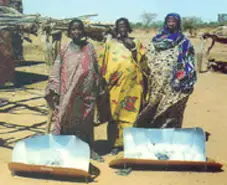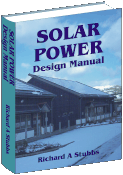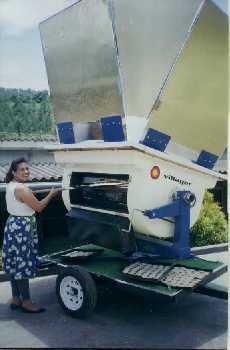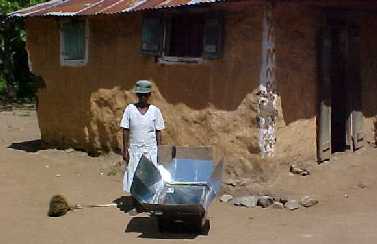
Solar Stoves: One third of the world’s population are daily dependent on firewood, and for half of those people wood and other biomass is already scarce. Most of them live in just twenty-five fuel-scarce, sun-rich countries, primarily in western Asia and eastern Africa.  studies undertaken in South Africa, poor families are spending up to 26% of their monthly income on fuel. Land around refugee camps in Kenya has been stripped clean of trees and vegetation. The average Kenyan spends about 40% of earned income on fuel, 74% of which is used for cooking. Using solar stoves represented a considerable saving for these families.
studies undertaken in South Africa, poor families are spending up to 26% of their monthly income on fuel. Land around refugee camps in Kenya has been stripped clean of trees and vegetation. The average Kenyan spends about 40% of earned income on fuel, 74% of which is used for cooking. Using solar stoves represented a considerable saving for these families.
“The use of solar cookers also brings with in important health benefits. Diseases spread through contaminated water cause 80% of the illnesses in the world (WHO). Heating water to the pasteurisation temperature of about 60 0C destroys disease organisms. This temperature is easily achieved with solar cookers. Acute respiratory infections (ARI) are the cause of death for millions of children in the world each year. The large majority of these casualties occur in the developing countries as a result of polluted indoor air due to cooking over open fires in houses without chimneys or ventilation. This problem could be greatly reduced by using solar cookers, which are, of course, completely smokeless” (Technology for Life, Finland).
 Solar Stove Designs
Solar Stove Designs
Jenni Currit and Steven Jones from Department of Physics and Astronomy at Brigham Young University outline the three types of sun cookers. The many designs can be organized in three categories:
parabolic cookers;
panel cookers and;
box cookers.
Each has advantages and disadvantages. Parabolic cookers, as the name implies, are made from any reflective material shaped like a parabola which focuses the light to a single point. They are known for their ability to cook food fast and efficiently. Unfortunately they tend to be more expensive and difficult to make by hand. There are also safety concerns which make them difficult to use and recommend. Panel cookers include any cooker made of a series of flat panels that directs the light to a certain area. It is not as effective as a parabolic cooker, but it is safer and easier to build. Box cookers consist of a box that is insulated on all sides with one side covered with plastic to allow sunlight to enter. Each of the inside surfaces are covered with reflective material. This type of cooker does not necessarily focus the light energy to a spot but rather heats up the entire box and allows large quantities of food to be cooked.

DYI and Commercial Solar Stoves
There are a number of oven and stove manufacturers. Sun Ovens International make the huge trailer mounted VILLAGER SUN OVEN® (above middle) which is designed for large-scale feeding situations that require cooking great volumes of food quickly. Even though it is called an oven, enormous quantities of food can be boiled, steamed or baked at cooking temperatures of 500° F / 260° C with no fuel costs. They also make smaller ovens,(image above) with cooking temperatures of 360° F / 182° C, which is ideal for cooking the majority of foods in the developing world.
The Solar Cooking site has a large range of designs and plans to build your own solar stove or oven, or you could purchase a ready-made cooker.
Page updated 3 May 2010
